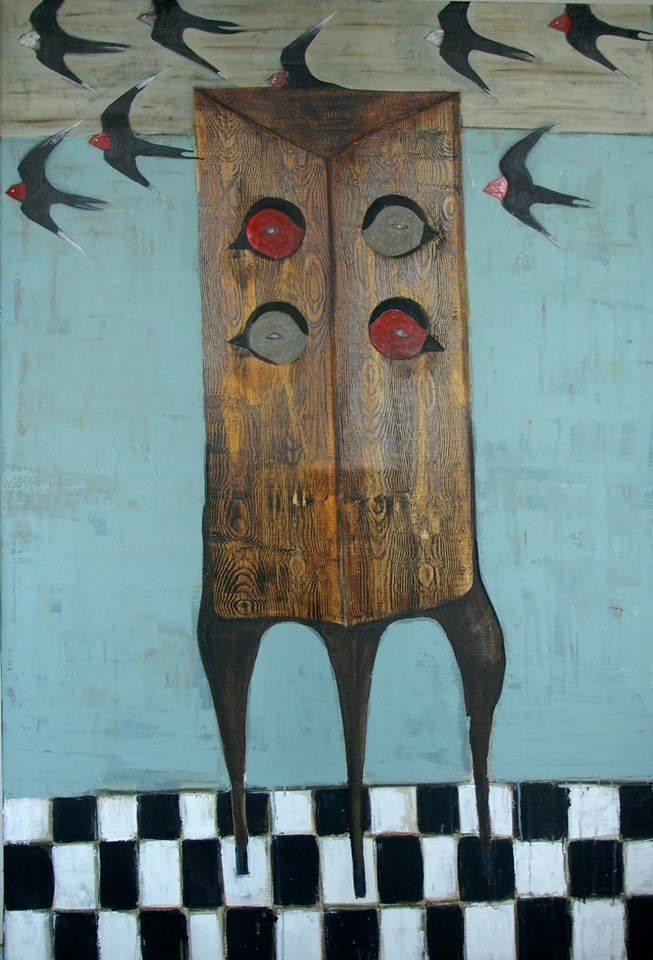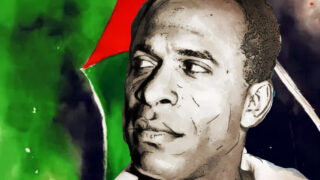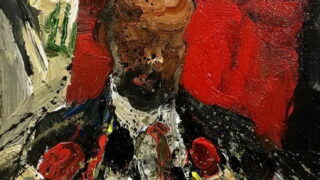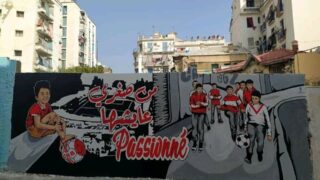
This publication has benefited from the support of the Rosa Luxemburg Foundation. This text may be reproduced in part or in full, provided the source is acknowledged.
Between 2014 and 2018, Algeria has expelled more than 30 000 persons from various Sahel and sub-Saharan African countries; the Algerian authorities have announced that, every year, around 500 persons enter the Algerian territory illegally, arguing that they represent a threat to the national security to justify their deportation. In the contemporary period, sub-Saharan migrations in Algeria find their origins in the Sahelian climatic and political crises of the 70’s. In parallel, the presence of dark-skinned Algerians – notably the descendants of slaves, called “Hartani” - is important in the Southern region, but, as Salim Khiat noted, the representations differ between those two categories of dark-skinned people: while the first are valued for sharing the same cultural, political and religious heritage with the rest of the nation, the others are depicted in a disparaging way which attribute them with many “social scourges” as called by the media, accusing them of theft, drug trafficking, prostitution, illnesses, etc(1).
Nevertheless, the sub-Saharan migrants with an irregular status only represent a small minority of the population and of the 140 000 foreign workers of 125 nationalities who are legally employed. In comparison, Ali Bensaâd estimated the number of sub-Saharan migrants, either those settled in one place or circulating in the country, to be around 75 000 in 2019 (2), while the authorities announced the yearly expulsion of nearly 10 000 persons between 2006 and 2008 and 41 000 between 2009 and 2011. The researchers of the European University Institute in Florence have estimated the number of “sub-Saharan migrant workers” to be around a hundred thousand in Algeria in 2013 (3) .
In December 2012, the Ministry of Interior declared that, in the context of political and security crises in the region, there were 25 000 sub-Saharan migrants in Algeria. It therefore announced the reinforcement of the hosting capacities of the Department of the Deep South where most of the migrants were allegedly from Mali and Niger or from Nigeria and the Democratic Republic of Congo. Those migrant shave fled the conflicts and political instabilities that disturbed the traditional migratory routes and limited employment opportunities, or have moved because of the poor harvests caused by a climate factor. It is notably the case for the southern regions of Niger that were affected both by the activities of Boko Haram and a period of drought. Other numbers issued by the same Department mentioned that 30 000 “Malians” fled combats in the wake of the Franco-African intervention in Sahel but few information was given concerning the assistance that was provided to them or their legal status (many Northern Malians also have an Algerian nationality).
In May 2018, the European Union, in its Neighboring Policy with Algeria’s report, estimated that irregular migrants were “more than a hundred thousand”, including Syrian and Yemeni migrants (4) .
Increasingly complex migrations
Beyond the numbers, which are questionable with regard to status definition or sources and their possible instrumentalization, this political reaction was prompted by the development of Nigerian migratory channels in 2013 which implicated men, women, children and elderly people destined to beggary. Until then, the trans-Saharan migrations concerned mainly young men of working age who principally stayed in the popular areas of the Mediterranean metropoles, avoided public spaces and either circulated in the whole region (between Morocco, Algeria and Libya) or remained in the southern regions of Algeria. This new channel, probably linked with organized crime, dispersed those migrants - often coming from South Niger - into different regions: 250 in Mila (north-east Algeria), 850 in Ferdjioua, 200 in Constantine (the third largest city in Algeria) and more than 2000 in the province of Bejaia (with its important oil port on the Mediterranean). The working permit policy in the most strained sectors, such as construction, has given way to arrests and collective evictions. In Autumn 2014, following a visit by the Nigerian Minister for Internal Affairs, the government responded in favor of the request, formulated weeks earlier by the Nigerien Minister of Justice and spokesperson for the government, of “repatriating” their nationals who had entered Algeria illegally. These operations, sometimes aided by the International Organization for Migration (IOM), primarily concern the women and the children and mobilize the Ministries of Solidarity, Health, Internal Affairs and Transportations (which provides the buses that transport them) so that the human dignity of those who are repatriated is respected. These operations are sometimes supported by the army. Yet, for slightly over a year, those evictions were intensified and generalized to involve every migrant coming from sub-Sahara.
Determinants of those migrations are multiple and it is useless to value one more than another as the migratory flows have gotten increasingly complex over the past decades. The African growth, unevenly distributed over the continent, didn’t change the socio-economic conditions of a large portion of the population...Poor governance persists and, in the context of the globalization, the individualization of societies, the weakening of traditional support systems and the decrease in the fund transfers from the second and third generation migrants to their families, a desire for emancipation and empowerment rises, that can sometimes be concretized through migration.
Migration is often presented as an “adventure” that forges a strong character out of its difficulties and allows to develop oneself as a financially and culturally independent individual. The experience is lived as a rite of passage or an initiation rite, especially for the youngest among the migrators. However, it is no longer an immigration restricted to the youth from the countryside, of the poorly educated or low-skilled men registering in channels established through the family, the village or the social enterprise known as the “Noria”; the social trajectories of migrants have become individualized, non-linear (they circulate more than they immigrate) and outside of the legal frameworks as the conditions to migrate or study in Europe have become more difficult. Those migrants often come from the cities, have a high school education or more, belong to the middle-class rather than the disparate poor. Of course, the political and security crises of the Middle East have contributed the escalation of the phenomenon.
The politicization of migrations
But, this does not yet correspond to the image that the people and the authorities have of migrants. The popular xenophobia persists and is sustained on social media while the authorities blow hot and cold, alternating between reaffirming the Algerian politico-diplomatic principles (favoring a “global approach” of the question, refusing to become the policemen of Europe, privileging a humanitarian treatment) and reviving the most hackneyed stereotypes on dark-skinned Africans. The transporters (taxis, bus drivers) from Western Algeria have therefore been asked not to take sub-Saharan clients in order not to facilitate their movement, since those migrations have become a political issue in Algeria.
The president of the National Advisory Committee on the Promotion and Protection of Human Rights (NACPPHR) has proposed to prohibit access to the national territory to the sub-Saharans and Syrians. In an interview with the newspaper “Al Mihwar Al Yawmi”, published on September 6th, 2014,he stated that he wished to “preserve their dignity” while requiring “rigorous measures to limit their numbers” because of the “risks of the spreading of disease and criminality haunting our society”. The association “Algiers the White”, through Abdelhafidh Sellami, defended the arrest and eviction of the “Africans” from the capital. This cell, close to the Salafist and conservative movements, had already manifested itself in the countryside, calling for the closure of the bars and drinking establishments. Lakhdar Benkhellaf, an Islamist deputy from the Front for Justice and Development, supported national preference in access to employment and expressed concerns about public health and safety while calling for the grouping of the exiled and the organization of their assistance (5).
Afterwards, in 2017, members of the government deemed the sub-Saharan migrants as “threats” to “the national security” before being contradicted by the Head of the National Security who indicated that no link had ever been established between criminality and migration, which raises questions about the existence of a real immigration and asylum policy in Algeria that the state agrees on adopting.
These systematic expulsions are however justified by the risks encountered by the migrants, especially since small disputes or rumors have escalated into confrontations between Algerians and sub-Saharans in Oran in 2005 and in Ouargla and Bechar in 2016. We should notably recall the death of 92 persons, principally women and children, during their traversal by foot of the Algerian – Nigerien Sahara in October 2013, and the passing of a 2 year-old struck by a car while his mother – who was also killed – was begging in Bejaia in November 2014. Despite the precautions, a road accident in the South of Ghardaia claimed the lives of 9 persons - among them 3 children and 2 Algerians - and severely injured 16 people on December 14th2014 during a repatriation operation that was bringing migrants to Tamanrasset before sending them to Niger. In November 2015, a fire in an Algerian Red Cross warehouse hosting migrants took the lives of 18 persons in the city of Ouargla.
Among the Algerian population, some attitudes and representations have persisted, and were put forward, for example, during the Ebola epidemic in 2014. “Liberté” disclosed in its “Radar” supplement a conversation attesting to the pervasiveness of the association between the dark-skinned population and infectious diseases: an inhabitant of Algiers pestering a sub-Saharan about his alleged contamination with the Ebola virus was answered by the latter: “We all are the Ebola for someone else. You, yourself, are the Ebola!” In Guezzam, a border town in Niger, the simple rumor that infected migrants were arriving has created such a panic that the local authorities were forced to publicly deny the rumor. Among others, the daily tabloid Echourouk, has kept the traditional editorial line assimilating sub-Saharan migrants with diseases, criminality and prostitution, producing many racist front pages while most of the media, printed and online, had started to give a voice to migrants, to question their living conditions and to criticize the institutional and popular xenophobia.
The majority of the population, on the contrary, interrogates the visible and rapid evolution of this new presence of the migrants in the media, which had long been hidden and repressed, but this population remains concerned about the degrading living conditions of entire families and the lack of schooling for children – which constitute an important part of these “refugees”. The collective rape of an undocumented Cameroonian in Oran in 2015 caused widespread concern among the people while other incidents of the same kind have happened in the area. In Bejaia, the associations have demonstrated to demand the decent assistance of the families of migrants engaged in beggary. There are also small local associations where individuals organize assistance, especially during the month of Ramadan. The Algerian League for the Defense of Human Rights (ALDHR), the independent unions (notably the SNAPAP in Oran) and the youth associations are increasingly committing to the protection of migrants, while Amnesty International Algeria worries about the lack of an asylum policy. In an unprecedented event, the Algeria Migrants Platform was constituted in December 2015, as an organization that aims to raise awareness among the public and influence the authorities, particularly on the questions of discrimination and holdings; bringing together many organizations of the civil society, it demands a new law on asylum to update the existing legal framework, established by a decree in 1963.
It is mostly the Algerian deportation policy, although not new, that has been the subject of several criticisms not only from Algerian NGOs who care about the issue but also from international organizations and NGOs. The Nigerian government has complained that some of the migrants deported to its borders were not of Nigerien nationalities and did not fit within the scope of the repatriation agreement. Amnesty International has warned of the hard conditions of detention and refoulement - in the middle of the Sahara Desert - of men and women migrants, condemning the indiscriminate raids that push the authorities to sometimes expel people in a regular situation based only on the color of their skins (sometimes even expelling dark-skinned Algerians). The Office of the United Nations High Commissioner for Human Rights (OHCHR) has criticized the unclear procedures and their harshness. The rejected migrants have themselves expressed their resentment by demonstrating in front of the Algerian Consulate in Gao (Mali) in March 2018 to protest the ill-treatments which they had allegedly suffered in Algeria during their expulsion, notably the fact that they were released in a no man’s land in the middle of the desert.
In the middle of a region affected by the impacts of international political turmoil and projected into a Sahara going through economic and ecological mutations, Algeria is witnessing a change in the human mobility traversing its soil which is believed to be, rightly or wrongly, an island of stability in the region (6) . Migrations have become politicized or are perceived through a political lens. The official and dominant discourses do not hesitate to link the origin of those populations’ movements with the consequences of the political adventurism of neighboring peoples and of the western powers during the “Arab Spring”. The underlying politicization, or the sub-text, of these new representations and of the highlighted visibility of sub-Saharan and Syrian migrations, has raised questions for the ordinary citizens who were used to sub-analyze socio-political facts and translate public discourses and actions into profane language. Therefore, the diaspora of those new “crisis migrants”, from Adrar to Tebessa and from Algiers to Ghardaia, is perceived by some as a warning sign against the risks that might manifest in case a brutal overthrow of the regime occurs. Those new migrations prompt the population to question the consequences of a regional political instability – violence, economic crisis, accelerated pauperization, displacements - and the ruling power seems to be sardonically asking them the question: “And you, where do you think you would go then?”
The content of this publication is the sole responsibility of Assafir Al-Arabi and Rosa Luxemburg Foundation cannot accept any liability for it.
Translated from Arabic by Fourate Chahal Rekaby
Published in Assafir Al-Arabi on 28/08/2018
1-KHIAT, Salim, « Les noirs en Algérie : « Les nôtres » et « les leurs ». Noirs autochtones et immigrés subsahariens. L’Altérité en circulation », Naqd, n°32, 2015, pp. 207-225.
2-BENSAÂD, Ali, « L’immigration en Algérie. Une réalité prégnante et son occultation officielle », in : BENSAÂD, Ali (sous la direction de), Le Maghreb à l’épreuve des migrations subsahariennes. Immigration sur émigration, Paris : Karthala, 2009, pp. 18-20.
3-De BRUYCKER, Philippe, Di BARTOLOMEO Anna, FARGUES, Philippe, Migrants smuggled by sea to the EU : facts, laws and policy options, MPC RR2013/09, Robert Schuman Centre for Advanced Studies, San Domenico di Fiesole (FI) : European University Institute, 2013, p. 3.
4-The European Institutions note that approximatively 40 000 persons coming from conflict zones in Syria were hosted without formalities nor visas and that Algeria has facilitated their settlement as well as the schooling of their children.
5-GUENANFA, Hadjer, « L’Algérie confrontée à un exode massif des refugiés subsahariens, selon un député », TSA, 14 septembre 2014.
6-The article was written in July 2018, before the Algerian uprising.





